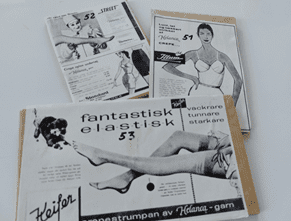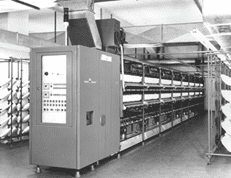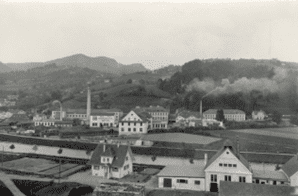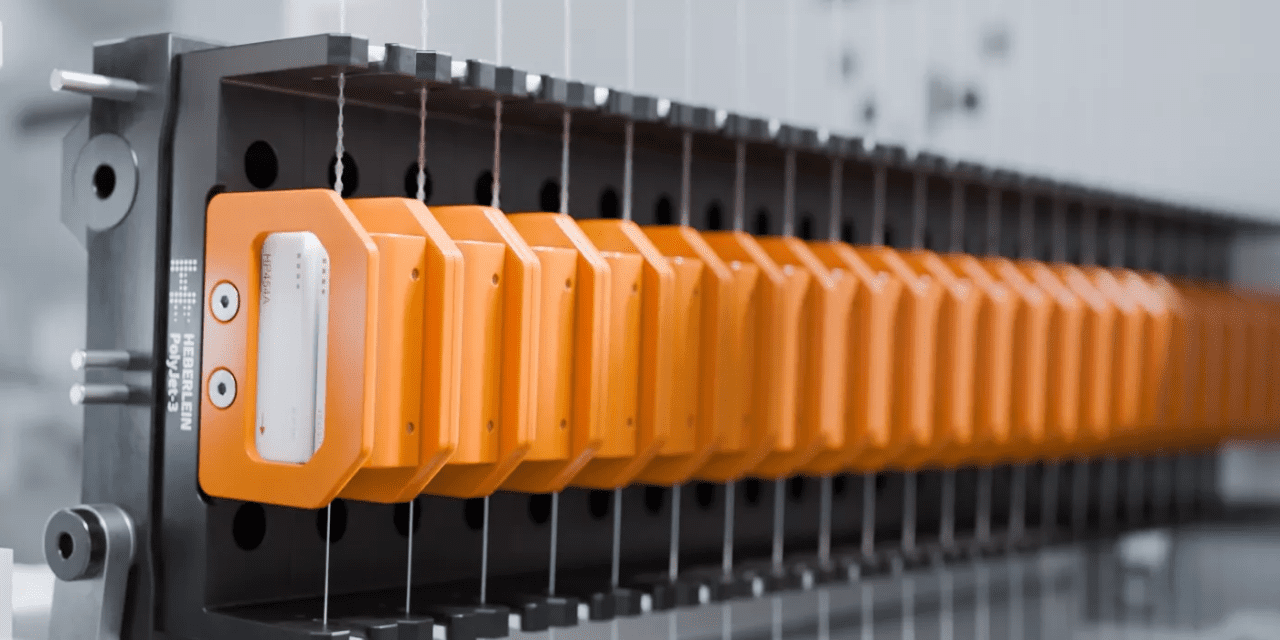Heberlein’s 190-year journey is a testament to the art of reorientation and innovation. From its humble beginnings in yarn dyeing, Georg Philipp Heberlein and his descendants transformed the family business into a global leader in air interlacing and air texturing jets for synthetic continuous filament yarns.
Core Competence: Specialised Components for Synthetic Yarns
Today, Heberlein specializes in the development and production of key components for the treatment and finishing of synthetic filaments. Over the years, the company has pioneered several innovations that have defined the textile industry.

Adverts for Helanca
Fantastic Elastic: The Birth of Texturisation
The journey began with the concept of twisting and heating man-made fibre threads at high speeds. In 1931, Heberlein patented a process known as texturisation, creating yarn with superb elasticity. The yarn, branded as Helanca, was initially produced from viscose filaments and later expanded to polyamide (nylon). Helanca’s commercial success grew significantly in the 1950s, and by the 1960s, Heberlein was producing millions of kilos annually, with output lengths surpassing the distance from Earth to the Moon.
Mechanical Initiative: Innovation in Manufacturing

Heberlein false-twisting machine manufactured around 1950
Heberlein’s mechanical processing capabilities led to the creation of sophisticated machinery for texturising. The company’s first system, built in-house in 1953, marked the beginning of its mechanical engineering division, which rapidly expanded and became a leading player in the field.
Air Currents: A Strategic Shift
In the 1970s, Heberlein pivoted to focus on air-jet texturing technology. By the late 20th century, the company was producing air interlacing jets and machine spare parts, positioning itself as a key player in the global textile industry.
Diversification and Continued Success
Heberlein’s evolution continued with the founding of Heberlein Fasertechnologie AG in 1997, which re-focused the company on its core areas. In 2005, Heberlein Ceramics was established, building the foundation for today’s innovative Heberlein jets. The company’s journey through acquisitions and ownership changes culminated in 2023 with the formation of Heberlein Technology AG, ensuring its future success.
A Rich Legacy of Innovation

Heberlein company premises in Wattwil (Switzerland) photographed between 1910 and 1920
Heberlein’s roots date back to 1835 when Georg Philipp Heberlein founded a yarn dyeing business in Wattwil, Switzerland. Over the decades, five generations carried on the tradition, expanding into textile finishing, printing, and mechanical engineering. Through both success and crisis, Heberlein’s ability to innovate and adapt kept it at the forefront of industry advancements.
Agility and Innovation for the Future
Today, Heberlein continues to innovate, bringing new products to market and meeting the needs of a broad customer base. With products like Transparent, Hecolan, Hetex, and Helanca, the company remains a leader in delivering both aesthetic and process-driven solutions. Heberlein’s legacy as a world leader in textile technology remains as strong as ever, continually shaping the future of the industry.

